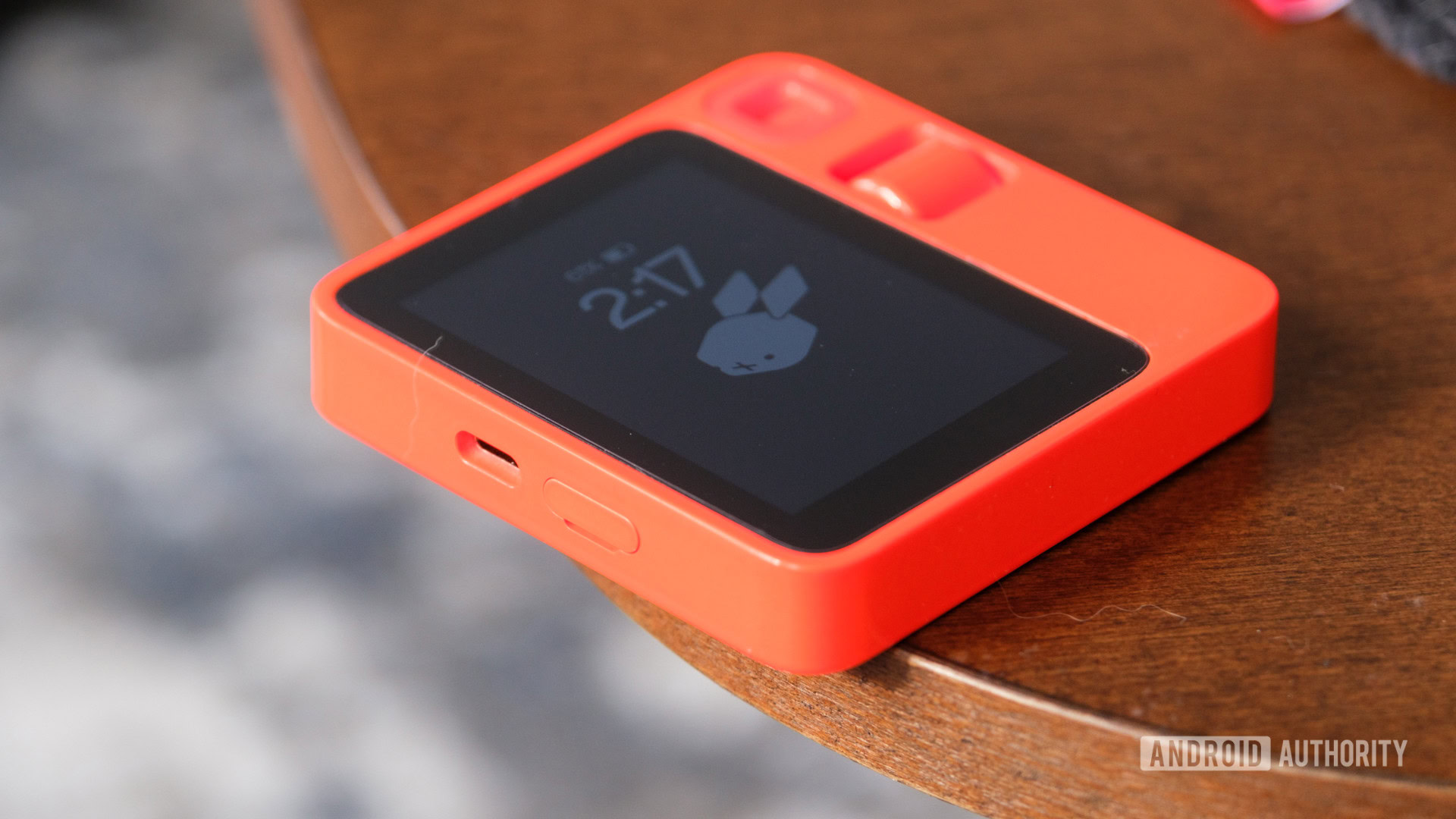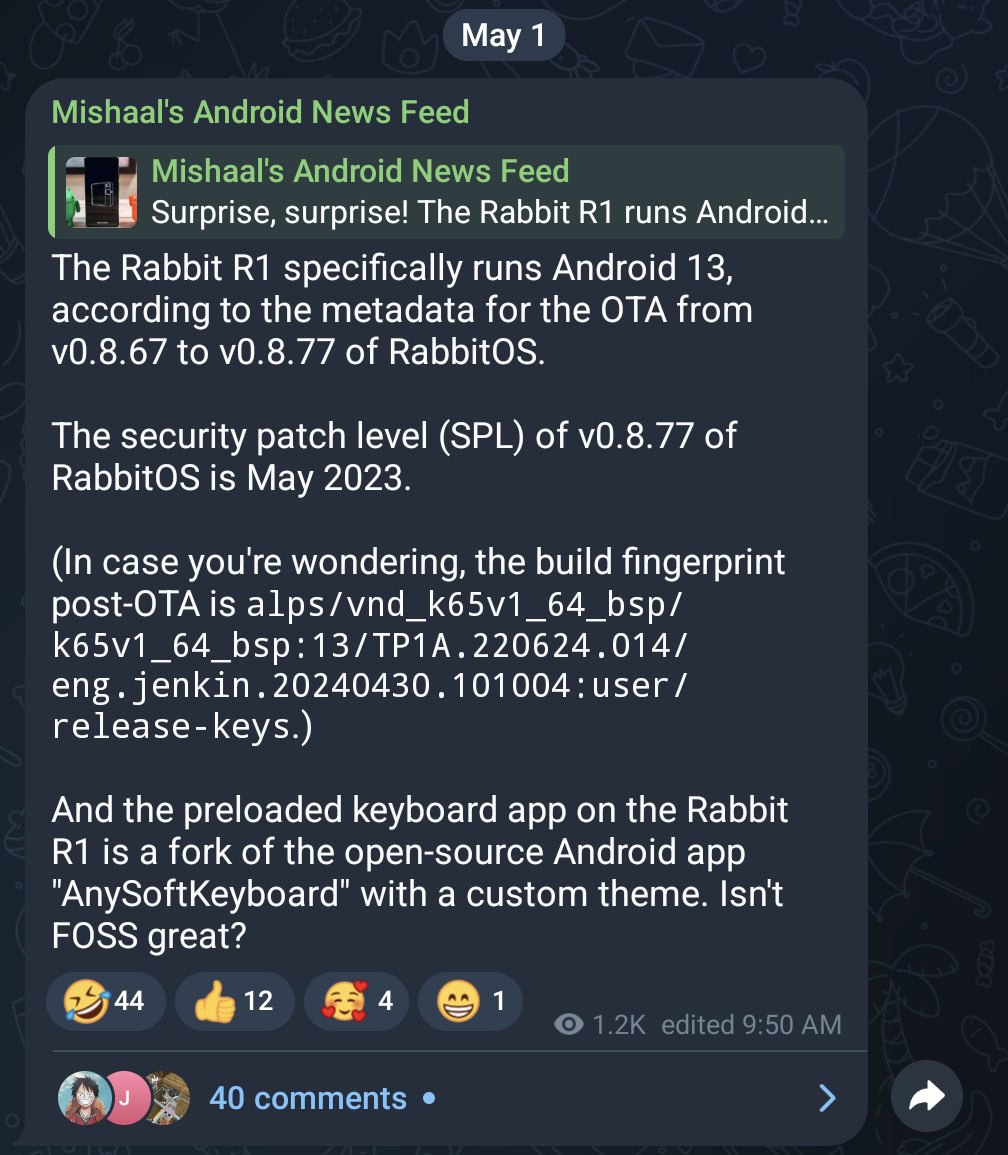Affiliate links on Android Authority may earn us a commission. Learn more.
The Rabbit R1 has Android 13 under the hood
Published onMay 1, 2024

- We now have evidence proving the Rabbit R1 is running Android 13.
- This means the device could run other Android apps outside of the “Rabbit OS” app that currently controls the R1.
- The weak processor in the R1, though, would prevent it from doing much.
Yesterday, we broke the news that the software that allows you to control the AI-first Rabbit R1 device is actually just an Android APK — essentially a proprietary launcher. We even showed you the app running on a Pixel with minimal hacking necessary to get it on there. This heavily suggested that the Rabbit R1 is just an Android device running some form of AOSP, but we couldn’t fully prove it at the time.
Today, though, we can confirm that the R1 is specifically running Android 13, the 2022 version of the operating system. We obtained this from Mishaal Rahman, a frequent contributor to Android Authority. Rahman posted the confirmation on his various social channels:

Rahman was able to confirm the version of Android on the R1 by examining the metadata from the official OTA update for the R1, which shipped yesterday. He was also able to see that it’s currently running a May 2023 security patch, meaning it is nearly a year behind on that front.
Furthermore, Rahman found that the keyboard on the R1 — which is the only touch-supported feature of the device, for some reason — is a fork of the open-source Android app AnySoftKeyboard, which you can try out for yourself at the link, if you like. Rabbit appears to have just skinned this app to make it match the aesthetic of the R1.
What does this all mean? It essentially means the Rabbit R1 — despite the company trying to position it as a revolutionary product — is really just a low-powered Android device. It runs a simple APK launcher as an “OS,” has a weak 2.4GHz MediaTek processor under the hood, and runs an old version of Android with an outdated security patch.
This does mean you could install other apps and launchers onto the R1. You could even install a different version of Android, theoretically. However, the weak hardware and limiting controls of the R1 would make this an interesting test, but still leave you with an under-powered $200 Android device with a tiny TFT display.
Also, it should be noted that the key features of the R1 don’t happen on-device. Talking with the LLM/LAM requires a data connection because all that processing happens in the cloud. Yesterday, we were able to get this to work on a Pixel, but Rabbit has since patched that security flaw, so only true Rabbit R1 devices can connect to the company’s cloud services.
We have discovered a lot more about the internals of the Rabbit R1. Expect a deeper dive into the device coming later today.